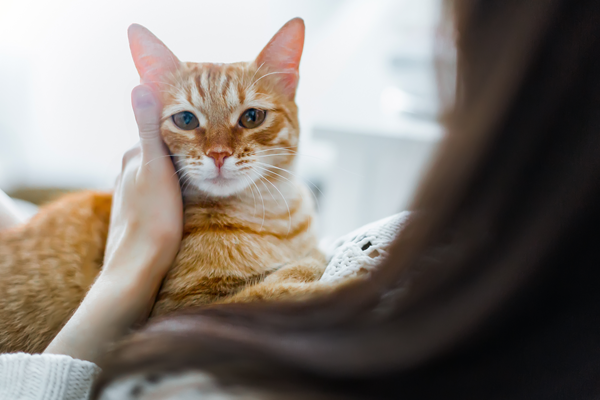
September is Animal Pain Awareness Month, so now the perfect time to talk about something that often slips under the radar: feline pain.
Cats are experts at hiding pain, so this month, let’s decode their silent clues. Let’s talk about feline pain – how to spot it, why it matters, and how addressing it early can improve your cat’s life, from their mobility to their mood, and even their cognitive function.
Silent Suffering: Why Cats Hide Their Pain
First, a bit of biology and evolution. Cats are both predator and prey, so they have learned to hide any weakness as part of survival. A limping, sluggish animal is an easy target. So instead of yowling, they mask their discomfort with the feline poker face.
This survival instinct means that by the time a cat is visibly limping, skipping meals, or acting out, the pain may have been present for a while.
It’s Not Just Pain
Pain alters the entire body and brain – subtly at first, then all at once.
Chronic pain (such as osteoarthritis) can trigger inflammation throughout the body, affecting immune function, mobility, and organ systems. Cats may stop grooming certain areas because their spine or hips ache too much to twist properly. That unkempt fur? It’s not laziness. It’s a clue.
Chronic pain also affects the brain. It can trigger or increase anxiety, causing cats to become more antisocial and withdrawn, or worse – aggressive. Clues include:
- Hiding
- Avoiding people or other pets
- Selecting abnormal sleeping areas
Chronic pain can even rewire the brain over time, increasing sensitivity and lowering the cat’s threshold for stress and agitation. Clues include:
- A once-affectionate cat that hisses when touched
- A formerly playful cat loses interest in toys, or even food
Reading Between the Whiskers: Signs Your Cat Might Be in Pain
So how do you spot something your cat is trying to hide? Here are some more clues to watch for:
- Changes in movement
- Hesitating before jumping up or going up stairs
- Hopping up or down stairs
- Trembling legs
- Limping
- Shifts in grooming habits
- Scruffy appearance, mats in the fur, dandruff (under-grooming)
- Areas of less fur (over-grooming)
- Litter box changes
- Missing the box: urinating over the edge or avoiding covered boxes entirely
- Altered vocalizations
- Excessive meowing, growling, hissing, or purring at odd times (yes, purring can sometimes mean stress or pain)
- Unusual facial expressions
- Narrowed or squinted eyes
- A flattened face
- Ears held differently
- A “vacant” look
That last one – facial expression – is actually measurable. Researchers developed the Feline Grimace Scale to identify pain by observing five key facial features: ears, eyes, muzzle tension, whisker position, and head position. A cat with pain may have squinted eyes, flattened ears, tense whiskers, and a lowered head.
You can even score your cat’s expression using their app or their online tool at www.felinegrimacescale.com. It’s worth a look. Especially when your cat won’t tell you how they feel.
Why Early Pain Recognition Matters
The longer that pain goes untreated, the harder it is to manage. Chronic pain creates feedback loops; what starts as a sore joint can become full-body stiffness, lethargy, cognitive fog, even depression.
Pain also can break down the bond you share with your pet. A cat who learns that being touched hurts may pull away, hide more often, or stop seeking out affection. Their world gets smaller, and yours does, too. By spotting pain early, you can help your cat not just live longer but live better.
Veterinarians now have a variety of treatments available that can significantly reduce pain without sedating your cat or making them feel drugged – from anti-inflammatory medications to laser, acupuncture, and physical therapy. But your veterinarian can’t help unless they know, and they can’t know unless you notice.
Final Thoughts
If you’ve read this far, you probably already suspect something. Maybe your cat isn’t jumping on the bed like they used to. Maybe they’ve started sleeping in odd spots. Maybe their coat isn’t quite as silky. These aren’t quirks, they’re clues.
So next time you see your cat, take a closer look. Focus on their face, then watch them walk. Because when it comes to cats and pain, you need to be the ultimate detective. And catching it early is the best gift you can give them.
